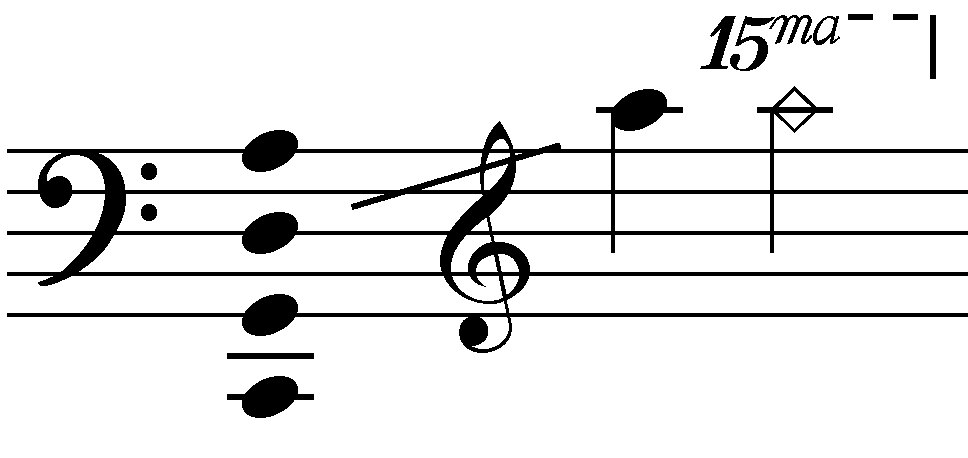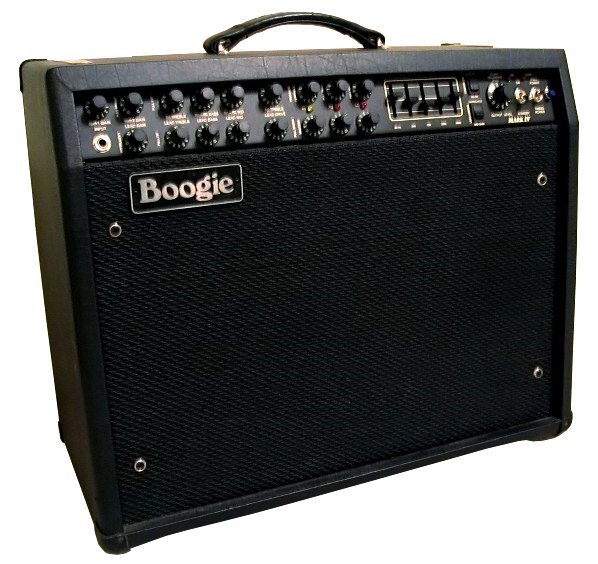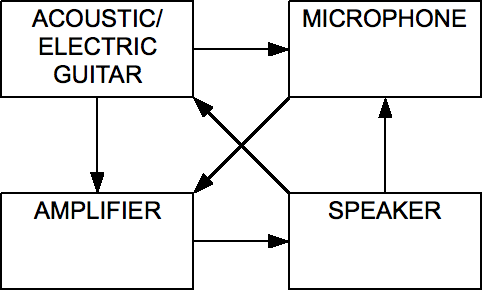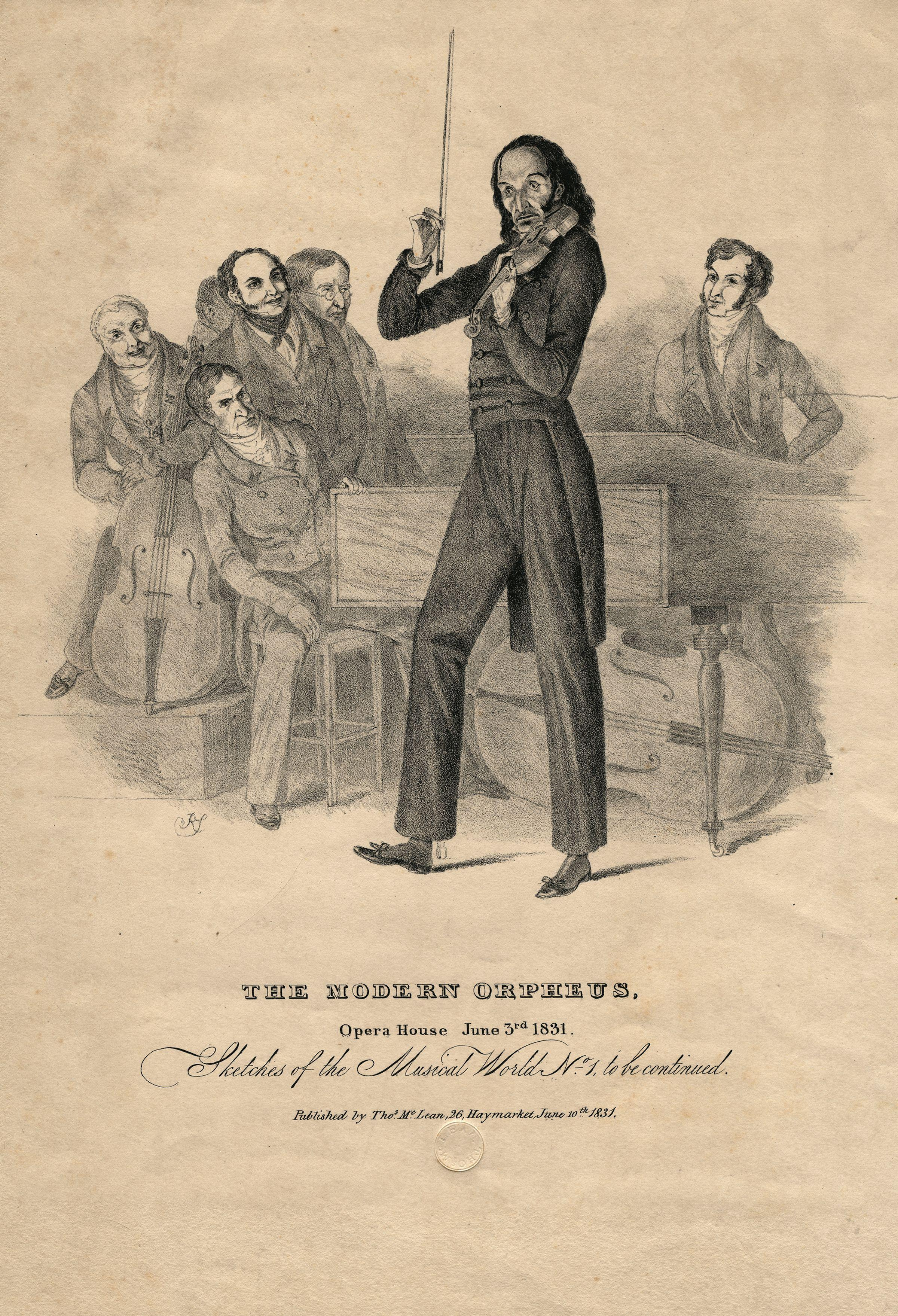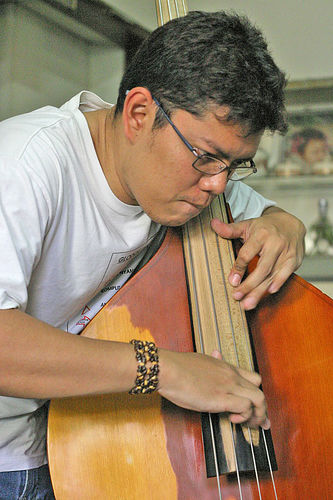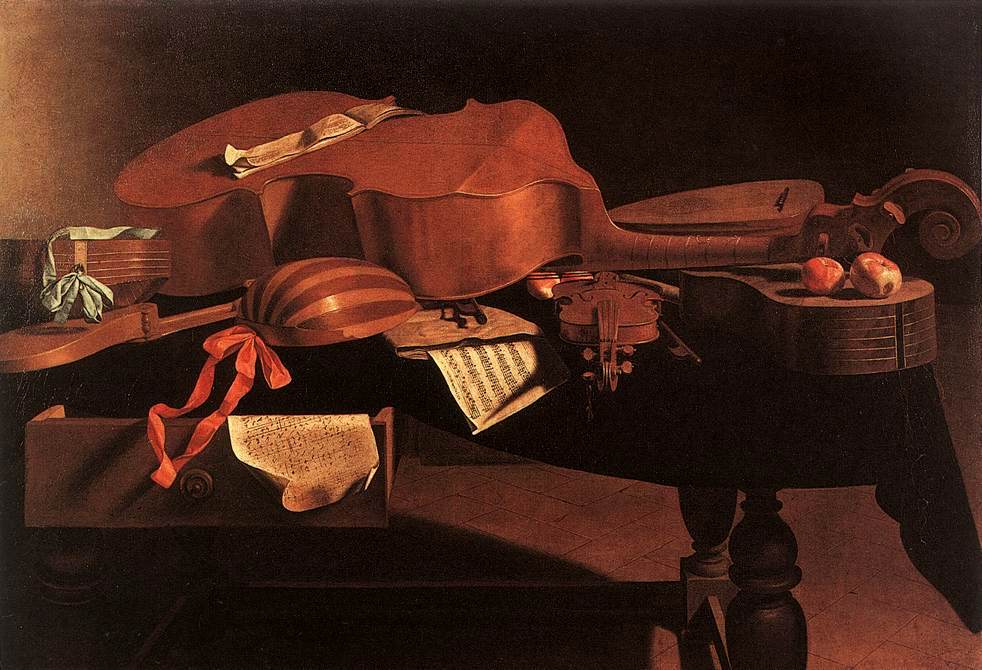|
String Instrument
In musical instrument classification, string instruments, or chordophones, are musical instruments that produce sound from vibrating strings when a performer strums, plucks, strikes or sounds the strings in varying manners. Musicians play some string instruments, like Guitar, guitars, by plucking the String (music), strings with their fingers or a plectrum, plectrum (pick), and others by hitting the strings with a light wooden hammer or by rubbing the strings with a bow (music), bow, like Violin, violins. In some keyboard (music), keyboard instruments, such as the harpsichord, the musician presses a key that plucks the string. Other musical instruments generate sound by striking the string. With bowed instruments, the player pulls a rosined horsehair bow across the strings, causing them to vibrate. With a hurdy-gurdy, the musician cranks a wheel whose rosined edge touches the strings. Bowed instruments include the string section instruments of the orchestra in Western classic ... [...More Info...] [...Related Items...] OR: [Wikipedia] [Google] [Baidu] |
Cello
The violoncello ( , ), commonly abbreviated as cello ( ), is a middle pitched bowed (sometimes pizzicato, plucked and occasionally col legno, hit) string instrument of the violin family. Its four strings are usually intonation (music), tuned in perfect fifths: from low to high, scientific pitch notation, C2, G2, D3 and A3. The viola's four strings are each an octave higher. Music for the cello is generally written in the bass clef; the tenor clef and treble clef are used for higher-range passages. Played by a ''List of cellists, cellist'' or ''violoncellist'', it enjoys a large solo repertoire Cello sonata, with and List of solo cello pieces, without accompaniment, as well as numerous cello concerto, concerti. As a solo instrument, the cello uses its whole range, from bass to soprano, and in chamber music, such as string quartets and the orchestra's string section, it often plays the bass part, where it may be reinforced an octave lower by the double basses. Figured bass music ... [...More Info...] [...Related Items...] OR: [Wikipedia] [Google] [Baidu] |
Guitar Amplifier
A guitar amplifier (or amp) is an electronic amplifier, electronic device or system that strengthens the electrical signal from a Pickup (music technology), pickup on an electric guitar, bass guitar, or acoustic guitar so that it can produce sound through one or more loudspeakers, which are typically housed in a wooden speaker enclosure, cabinet. A guitar amplifier may be a standalone wood or metal cabinet that contains only the power amplifier (and preamplifier) circuits, requiring the use of a separate speaker cabinet–or it may be a ''combo'' amplifier, which contains both the amplifier and one or more speakers in a wooden cabinet. There is a wide range of sizes and power ratings for guitar amplifiers, from small, lightweight practice amplifiers with a single 6-inch speaker and a 10-watt amp to heavy combo amps with four 10-inch or four 12-inch speakers and a 100-watt amplifier, which are loud enough to use in a nightclub or bar performance. Guitar amplifiers can also modify ... [...More Info...] [...Related Items...] OR: [Wikipedia] [Google] [Baidu] |
Distortion (music)
Distortion and overdrive are forms of audio signal processing used to alter the sound of amplified electric musical instruments, usually by increasing their gain (electronics), gain, producing a "fuzzy", "growling", or "gritty" tone. Distortion is most commonly used with the electric guitar, but may be used with other instruments, such as bass guitar, electric bass, electric piano, synthesizer, and Hammond organ. Guitarists playing Chicago blues, electric blues originally obtained an overdriven sound by turning up their vacuum tube-powered guitar amplifiers to high volumes, which caused the signal to clipping (audio), distort. Other ways to produce distortion have been developed since the 1960s, such as distortion effects unit, effect pedals. The growling tone of a distorted electric guitar is a key part of many genres, including blues and many rock music genres, notably hard rock, punk rock, hardcore punk, acid rock, grunge and heavy metal music, while the use of distorted bas ... [...More Info...] [...Related Items...] OR: [Wikipedia] [Google] [Baidu] |
Feedback (guitar)
Audio feedback (also known as acoustic feedback, simply as feedback) is a positive feedback situation that may occur when an acoustic path exists between an audio output (for example, a loudspeaker) and its audio input (for example, a microphone or guitar pickup). In this example, a signal received by the microphone is amplified and passed out of the loudspeaker. The sound from the loudspeaker can then be received by the microphone again, amplified further, and then passed out through the loudspeaker again. The frequency of the resulting howl is determined by resonance frequencies in the microphone, amplifier, and loudspeaker, the acoustics of the room, the directional pick-up and emission patterns of the microphone and loudspeaker, and the distance between them. The principles of audio feedback were first discovered by Danish scientist Søren Absalon Larsen, hence it is also known as the Larsen effect. Feedback is almost always considered undesirable when it occurs with a si ... [...More Info...] [...Related Items...] OR: [Wikipedia] [Google] [Baidu] |
Tapping
Tapping is a playing technique that can be used on any stringed instrument, but which is most commonly used on guitar. The technique involves a string being fretted and set into vibration as part of a single motion. This is in contrast to standard techniques that involve fretting with one hand and picking with the other. Tapping is the primary technique intended for instruments such as the Chapman Stick. Description Tapping is an extended technique, executed by using either hand to 'tap' the strings against the fingerboard, thus producing legato notes. Tapping generally incorporates pull-offs or hammer-ons. For example, a right-handed guitarist might press down abruptly ("hammer") onto fret twelve with the index finger of the right hand and, in the motion of removing that finger, pluck ("pull") the same string already fretted at the eighth fret by the little finger of their left hand. This finger would be removed in the same way, pulling off to the fifth fret. Thus the t ... [...More Info...] [...Related Items...] OR: [Wikipedia] [Google] [Baidu] |
Electric Guitar
An electric guitar is a guitar that requires external electric Guitar amplifier, sound amplification in order to be heard at typical performance volumes, unlike a standard acoustic guitar. It uses one or more pickup (music technology), pickups to convert the vibration of its strings into Electrical signal, electrical signals, which ultimately are reproduced as sound by loudspeakers. The sound is sometimes shaped or electronically altered to achieve different timbres or tonal qualities via amplifier settings or knobs on the guitar. Often, this is done through the use of Effects unit, effects such as reverb, Distortion (music), distortion and "overdrive"; the latter is considered to be a key element of electric blues guitar music and jazz, rock music, rock and Heavy metal music, heavy metal guitar playing. Designs also exist combining attributes of electric and acoustic guitars: the Semi-acoustic guitar, semi-acoustic and Acoustic-electric guitar, acoustic-electric guitars. Inven ... [...More Info...] [...Related Items...] OR: [Wikipedia] [Google] [Baidu] |
Pizzicato
Pizzicato (, ; translated as 'pinched', and sometimes roughly as 'plucked') is a playing technique that involves plucking the strings of a string instrument. The exact technique varies somewhat depending on the type of instrument: * On bowed string instruments it is a method of playing by plucking the strings with the fingers, rather than using the bow. This produces a very different sound from bowing, short and percussive rather than sustained. * On keyboard string instruments, such as the piano, pizzicato may be employed (although rarely seen in traditional repertoire, this technique has been normalized in contemporary music, with ample examples by George Crumb, Tōru Takemitsu, Helmut Lachenmann, and others) as one of the variety of techniques involving direct manipulation of the strings known collectively as " string piano". * On the guitar, it is a muted form of plucking, which bears an audible resemblance to pizzicato on a bowed string instrument with its relatively ... [...More Info...] [...Related Items...] OR: [Wikipedia] [Google] [Baidu] |
Folk Music
Folk music is a music genre that includes #Traditional folk music, traditional folk music and the Contemporary folk music, contemporary genre that evolved from the former during the 20th-century folk revival. Some types of folk music may be called world music. Traditional folk music has been defined in several ways: as music transmitted orally, music with unknown composers, music that is played on traditional instruments, music about cultural or national identity, music that changes between generations (folk process), music associated with a people's folklore, or music performed by Convention (norm), custom over a long period of time. It has been contrasted with popular music, commercial and art music, classical styles. The term originated in the 19th century, but folk music extends beyond that. Starting in the mid-20th century, a new form of popular folk music evolved from traditional folk music. This process and period is called the (second) folk revival and reached a zenith ... [...More Info...] [...Related Items...] OR: [Wikipedia] [Google] [Baidu] |
Fiddle
A fiddle is a Bow (music), bowed String instrument, string musical instrument, most often a violin or a bass. It is a colloquial term for the violin, used by players in all genres, including European classical music, classical music. Although in many cases violins and fiddles are essentially synonymous, the style of the music played may determine specific construction differences between fiddles and classical violins. For example, fiddles may optionally be set up with a Violin construction and mechanics#Bridge, bridge with a flatter arch to reduce the range of bow-arm motion needed for techniques such as the double shuffle, a form of bariolage involving rapid alternation between pairs of adjacent strings. To produce a Timbre#Brightness, ''brighter'' tone than the deep tones of gut or synthetic core strings, fiddlers often use steel strings. The fiddle is part of many traditional (Folk music, folk) styles, which are typically Music#Oral and aural tradition, aural traditions— ... [...More Info...] [...Related Items...] OR: [Wikipedia] [Google] [Baidu] |
Baroque Music
Baroque music ( or ) refers to the period or dominant style of Classical music, Western classical music composed from about 1600 to 1750. The Baroque style followed the Renaissance music, Renaissance period, and was followed in turn by the Classical period (music), Classical period after a short transition (the Galant music, galant style). The Baroque period is divided into three major phases: early, middle, and late. Overlapping in time, they are conventionally dated from 1580 to 1650, from 1630 to 1700, and from 1680 to 1750. Baroque music forms a major portion of the "Western art music, classical music" Western canon, canon, and continues to be widely studied, performed, and listened to. The term "baroque" comes from the Portuguese word ''barroco'', meaning "baroque pearl, misshapen pearl". Key List of Baroque composers, composers of the Baroque era include Johann Sebastian Bach, Antonio Vivaldi, George Frideric Handel, Georg Philipp Telemann, Domenico Scarlatti, Claudio Monte ... [...More Info...] [...Related Items...] OR: [Wikipedia] [Google] [Baidu] |
Early Music
Early music generally comprises Medieval music (500–1400) and Renaissance music (1400–1600), but can also include Baroque music (1600–1750) or Ancient music (before 500 AD). Originating in Europe, early music is a broad Dates of classical music eras, musical era for the beginning of Classical music, Western classical music. Terminology Interpretations of historical scope of "early music" vary. The original Academy of Ancient Music formed in 1726 defined "Ancient" music as works written by composers who lived before the end of the 16th century. Johannes Brahms and his contemporaries would have understood Early music to range from the High Renaissance and Baroque, while some scholars consider that Early music should include the music of ancient Greece or Music of ancient Rome, Rome before 500 AD (a period that is generally covered by the term Ancient music). Music critic Michael Kennedy (music critic), Michael Kennedy excludes Baroque, defining Early music as "musical composi ... [...More Info...] [...Related Items...] OR: [Wikipedia] [Google] [Baidu] |
